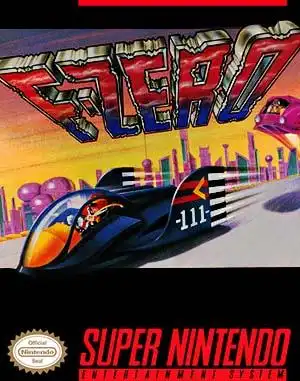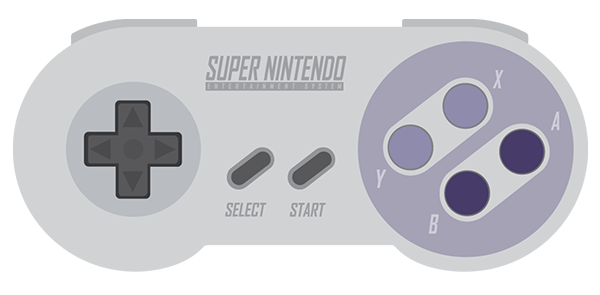F-Zero: Revisiting Nintendo's Lightning-Fast SNES Classic
Prepare for boost off! Long before Captain Falcon was a meme-generating, knee-smashing icon in Super Smash Bros., he was just one of four pilots vying for glory in the inaugural F-Zero on the Super Nintendo Entertainment System. Released as a launch title for the SNES in 1990 (1992 in Europe), this futuristic racer wasn't just another game; it was a bold statement about what Nintendo's new 16-bit console could do.
Dive back into the futuristic speed of F-Zero on the SNES. Explore its Mode 7 magic, challenging gameplay, and enduring legacy in retro gaming.
While not the absolute first futuristic racing game ever, F-Zero certainly set a new standard for console speed and visual flair, thanks largely to the SNES's groundbreaking Mode 7 graphics capabilities. It felt like nothing else at the time, throwing players onto twisting, undulating tracks at breakneck speeds.
The Need for Speed: What Made F-Zero Stand Out?
Stepping into the cockpit of your chosen machine – be it the iconic Blue Falcon, the speedy Golden Fox, the tank-like Fire Stingray, or the balanced Wild Goose – immediately conveyed a sense of raw, unadulterated speed. The Mode 7 scaling and rotation created a convincing pseudo-3D effect, making tracks appear to stretch into the horizon, banking and curving in ways previously unimaginable on a home console.
Beyond the visual spectacle, the track design was key. Courses like Mute City, Big Blue, and Sand Ocean became instantly recognizable, featuring jump zones, magnetic guard rails (that still hurt!), and hazardous pit lanes you needed to manage for repairs. It wasn't just about holding down the accelerator; it was about precision.
Mastering the Machine: Gameplay & Controls
F-Zero's controls were deceptively simple but offered surprising depth. The shoulder buttons (L and R) weren't for braking – braking barely existed at these speeds! – but for leaning into turns. Mastering this lean was crucial for shaving seconds off laps and navigating tight corners without scraping those magnetic walls or, worse, tumbling into the abyss.
Boost pads offered temporary bursts of speed, essential for overtaking rivals or recovering from mistakes. You also had a limited number of boosts available per lap, adding a strategic layer to their usage. The energy meter served as both your health and your boost reserve; using a boost depleted energy, and hitting obstacles or rivals also chipped away at it. Running out of energy meant a fiery explosion and a race restart. This risk-reward system kept every moment tense.
More Than Just a Tech Demo? The Debate
Some early critics dismissed F-Zero and other Mode 7 showcases like Pilotwings as mere graphical demos. While F-Zero undeniably flaunted the SNES's power, calling it just a tech demo feels unfair. Beneath the flashy visuals lay a genuinely challenging and well-tuned racing experience.
The AI, particularly on higher difficulty settings, was relentless. Opponents stuck to your tail like glue, exhibiting a form of "rubber-banding" that could be frustratingly effective. A single late-race error could see you plummet from first to last in seconds. While the lack of an in-game opponent map made their perfect positioning feel a bit like cheating, it certainly kept the pressure on! F-Zero demanded skill, precise inputs, and strategic energy management. It wasn't about random item drops; it was about pure racing prowess.
The F-Zero Legacy: Beyond the SNES
While the original SNES game was a single-player affair (a key reason Super Mario Kart later dominated the multiplayer scene), it spawned a beloved, albeit sporadically released, franchise. Titles like F-Zero X on the N64, F-Zero GX on the GameCube (developed by Sega!), and F-Zero GP Legend on the Game Boy Advance all built upon the foundation of high-speed, challenging racing. Each entry pushed the envelope, often introducing even more machines, complex track designs, and deeper lore, cementing Captain Falcon and the world of F-Zero in Nintendo history. The recent surprise release of F-Zero 99 on Nintendo Switch Online also reignited interest in the original's mechanics for a new generation.
How to Get Your F-Zero Fix Today
Feeling the urge to experience the original SNES speed? You've got a few options:
- Nintendo Switch Online: The easiest and most accessible way. F-Zero is included in the SNES library available to subscribers.
- SNES Classic Mini: If you were lucky enough to grab one of these retro consoles, F-Zero is one of the pre-loaded titles.
- Original Hardware/Emulation: Dust off your old SNES and a cartridge (though prices have climbed!), or explore emulation options like Snes9x or RetroArch if you own the game legally.
Is It Still Worth Playing in 2024/2025?
Absolutely. While modern racers boast photorealistic graphics and complex physics, the original F-Zero retains a timeless quality. Its focus on pure speed, challenging track layouts, and the satisfying feeling of nailing a perfect lean through a corner holds up remarkably well. It's a pure, unadulterated blast from the past that still demands your full attention and rewards mastery. It's a foundational piece of Nintendo's 16-bit era and a must-play for any retro racing fan.
Frequently Asked Questions
Q: Is F-Zero on Nintendo Switch Online? A: Yes, the original SNES F-Zero is available to play as part of the Super Nintendo Entertainment System library for Nintendo Switch Online subscribers.
Q: How many playable characters are in the original F-Zero? A: The original SNES game features four playable pilots/machines: Captain Falcon (Blue Falcon), Dr. Stewart (Golden Fox), Pico (Wild Goose), and Samurai Goroh (Fire Stingray).
Q: Is F-Zero a hard game? A: Yes, F-Zero can be quite challenging, especially on higher difficulty settings. Mastering the controls, managing your energy/boosts, and navigating the tracks at high speed requires practice and precision.
Q: Is F-Zero just a tech demo for Mode 7? A: While F-Zero was a showcase for the SNES's Mode 7 capabilities, it is widely considered a well-designed and engaging racing game with significant depth and challenge, not just a graphical demonstration.


